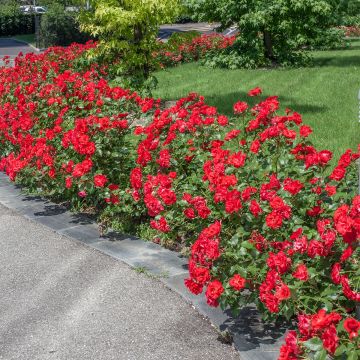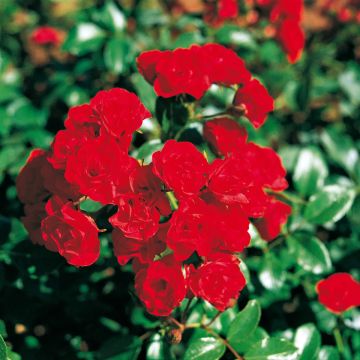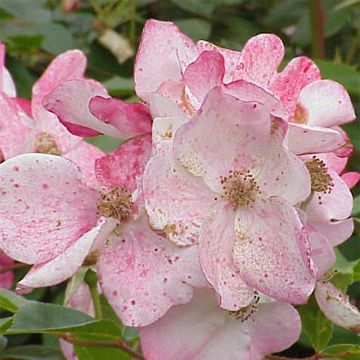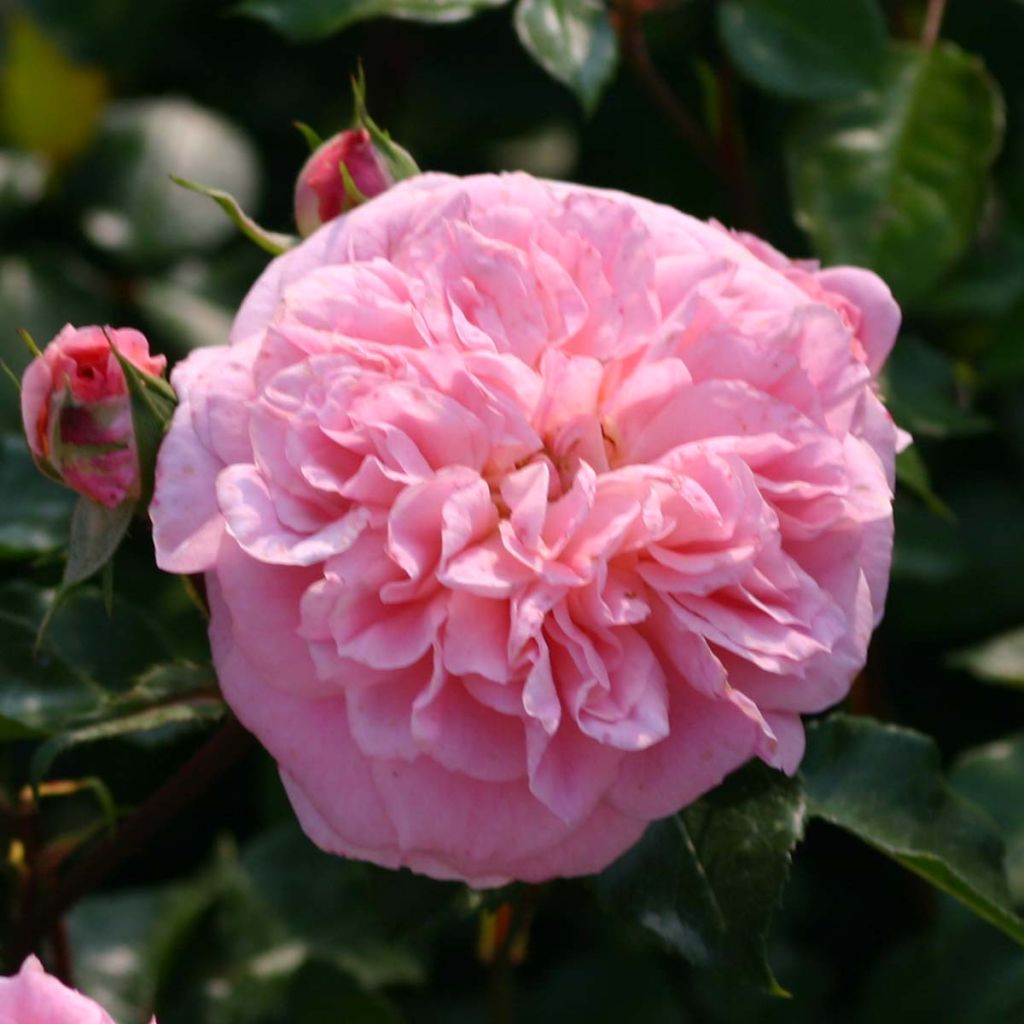

Rosa x wichuraiana 'May Queen'
Rosa x wichuraiana 'May Queen'
Rosa x wichuraiana May Queen
Climbing Rose 'May Queen'
This item cannot be shipped to the selected country
Delivery charge from €5.90
Delivery charge from €5.90
Delivery to Corse prohibited
More information
Schedule delivery date,
and select date in basket
This plant carries a 24 months recovery warranty
More information
We guarantee the quality of our plants for a full growing cycle, and will replace at our expense any plant that fails to recover under normal climatic and planting conditions.
From €5.90 for pickup delivery and €6.90 for home delivery
Express home delivery from €8.90.
From €5.90 for pickup delivery and €6.90 for home delivery
Express home delivery from €8.90.
Delivery to Corse prohibited: UE law prohibits the import of this plant from mainland France to Corse as part of the fight against Xylella fastidiosa. Please accept our sincere apologies.
More information
Does this plant fit my garden?
Set up your Plantfit profile →
Description
The Climbing Rose 'May Queen' perfumes a whole area of the garden in June, dispersing delicious fruity fragrances that evoke the scent of ripe apples. The lilac-pink flowers are flat and double, opening abundantly in quarters for several weeks. This beautiful rose is exceptionally hardy and has strong, shiny, healthy foliage. While it can climb trees and pergolas, it can also be trained as a beautiful free-standing hedge bush and form a stunning ground cover. A pure delight for lovers of old roses!
This exceptionally large rose is a creation by Manda in the United States, dating back to 1898. Strictly speaking, it is not an old rose, as its creation is later than 1867, but it has all the characteristics and is classified as such. This horticultural hybrid belongs to the complex family of Rosa Wichuraiana. The Asian ancestor of this family of excellent climbing roses, Rosa luciae, forms thickets in coastal regions and on seaside cliffs and grows on limestone soils. It has passed on some fascinating characteristics, such as shiny and dark foliage, beautiful vigour, and a unique but very generous flowering. 'May Queen' can easily reach a height of 4m (13ft) with a spread of 2m (7ft). Its long stems are flexible and covered with very healthy, shiny green foliage. The countless flowers of this variety, 7 cm (3in) wide, form in May-June and continue for four weeks. They emerge from short shoots aged two years as bright pink buds. They bloom into double to semi-double roses in the shape of flattened rosettes. Dazzling, they are surrounded by an extraordinary fragrance with acidic and fresh notes, aldehydic, which is not common among roses. The small fruits delight birds in the winter.
The Climbing Rose 'May Queen' is an incurable, romantic, delightful one that one would invite to the garden just for its fragrance. It is incomparable for adorning a gate, a fence or a small pergola. Still, its vigorous growth also allows it to thrive without assistance in a flowered hedge alongside a vigorous clematis like 'Prince Charles' or to be planted behind too strict flower beds. It is an ideal companion for dead trees or dreary sheds, bringing charm. Trained on an arch and placed in a large pot on the terrace, it will create a romantic and fragrant passage.
Report an error about the product description
Rosa x wichuraiana 'May Queen' in pictures
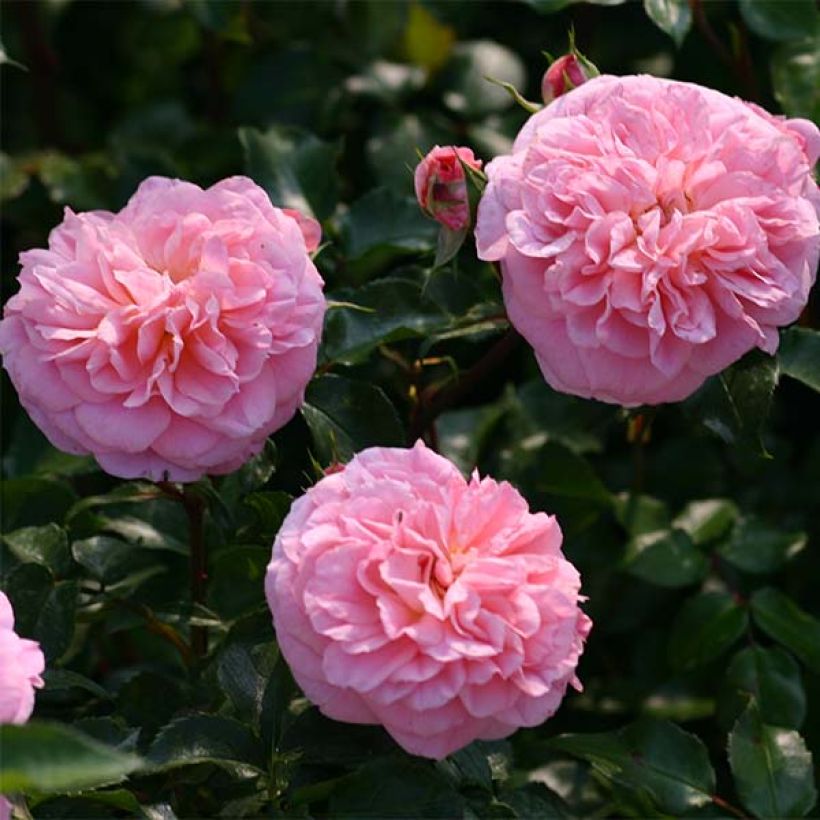



Plant habit
Flowering
Foliage
Botanical data
Rosa
x wichuraiana
May Queen
Rosaceae
Climbing Rose 'May Queen'
Cultivar or hybrid
Rosa canina Laxa (4L/5L pot, Wrapped bare root)
Other Roses A to Z
Planting and care
The 'May Queen' rose adapts to all types of soil, even heavy or sandy, as long as the planting is well cared for, with no lack of water or nutrients. Plant it in well-prepared and well-drained ordinary soil, sunny or partially shaded. Plant it in autumn and never when it's freezing.
If you plant a climbing rose next to a living tree, the rose's root system will compete with that of the already well-established tree. To control watering, here's a tip: plant the rose in a large container with a perforated bottom at the tree's base. The tree's roots won't penetrate the container for at least a year. Remove the container after 1 year, for example by cutting one side, without disturbing the rose's root system. By then, the rose will have had time to develop its root system and be more resistant deeply.
It is common for roses to become stained or unsightly towards the end of summer, but this does not indicate any problem with the rose's growth or health. These stains are natural and do not harm the plant in any way.
Planting period
Intended location
Care
-
, onOrder confirmed
Reply from on Promesse de fleurs
Haven't found what you were looking for?
Hardiness is the lowest winter temperature a plant can endure without suffering serious damage or even dying. However, hardiness is affected by location (a sheltered area, such as a patio), protection (winter cover) and soil type (hardiness is improved by well-drained soil).

Photo Sharing Terms & Conditions
In order to encourage gardeners to interact and share their experiences, Promesse de fleurs offers various media enabling content to be uploaded onto its Site - in particular via the ‘Photo sharing’ module.
The User agrees to refrain from:
- Posting any content that is illegal, prejudicial, insulting, racist, inciteful to hatred, revisionist, contrary to public decency, that infringes on privacy or on the privacy rights of third parties, in particular the publicity rights of persons and goods, intellectual property rights, or the right to privacy.
- Submitting content on behalf of a third party;
- Impersonate the identity of a third party and/or publish any personal information about a third party;
In general, the User undertakes to refrain from any unethical behaviour.
All Content (in particular text, comments, files, images, photos, videos, creative works, etc.), which may be subject to property or intellectual property rights, image or other private rights, shall remain the property of the User, subject to the limited rights granted by the terms of the licence granted by Promesse de fleurs as stated below. Users are at liberty to publish or not to publish such Content on the Site, notably via the ‘Photo Sharing’ facility, and accept that this Content shall be made public and freely accessible, notably on the Internet.
Users further acknowledge, undertake to have ,and guarantee that they hold all necessary rights and permissions to publish such material on the Site, in particular with regard to the legislation in force pertaining to any privacy, property, intellectual property, image, or contractual rights, or rights of any other nature. By publishing such Content on the Site, Users acknowledge accepting full liability as publishers of the Content within the meaning of the law, and grant Promesse de fleurs, free of charge, an inclusive, worldwide licence for the said Content for the entire duration of its publication, including all reproduction, representation, up/downloading, displaying, performing, transmission, and storage rights.
Users also grant permission for their name to be linked to the Content and accept that this link may not always be made available.
By engaging in posting material, Users consent to their Content becoming automatically accessible on the Internet, in particular on other sites and/or blogs and/or web pages of the Promesse de fleurs site, including in particular social pages and the Promesse de fleurs catalogue.
Users may secure the removal of entrusted content free of charge by issuing a simple request via our contact form.
The flowering period indicated on our website applies to countries and regions located in USDA zone 8 (France, the United Kingdom, Ireland, the Netherlands, etc.)
It will vary according to where you live:
- In zones 9 to 10 (Italy, Spain, Greece, etc.), flowering will occur about 2 to 4 weeks earlier.
- In zones 6 to 7 (Germany, Poland, Slovenia, and lower mountainous regions), flowering will be delayed by 2 to 3 weeks.
- In zone 5 (Central Europe, Scandinavia), blooming will be delayed by 3 to 5 weeks.
In temperate climates, pruning of spring-flowering shrubs (forsythia, spireas, etc.) should be done just after flowering.
Pruning of summer-flowering shrubs (Indian Lilac, Perovskia, etc.) can be done in winter or spring.
In cold regions as well as with frost-sensitive plants, avoid pruning too early when severe frosts may still occur.
The planting period indicated on our website applies to countries and regions located in USDA zone 8 (France, United Kingdom, Ireland, Netherlands).
It will vary according to where you live:
- In Mediterranean zones (Marseille, Madrid, Milan, etc.), autumn and winter are the best planting periods.
- In continental zones (Strasbourg, Munich, Vienna, etc.), delay planting by 2 to 3 weeks in spring and bring it forward by 2 to 4 weeks in autumn.
- In mountainous regions (the Alps, Pyrenees, Carpathians, etc.), it is best to plant in late spring (May-June) or late summer (August-September).
The harvesting period indicated on our website applies to countries and regions in USDA zone 8 (France, England, Ireland, the Netherlands).
In colder areas (Scandinavia, Poland, Austria...) fruit and vegetable harvests are likely to be delayed by 3-4 weeks.
In warmer areas (Italy, Spain, Greece, etc.), harvesting will probably take place earlier, depending on weather conditions.
The sowing periods indicated on our website apply to countries and regions within USDA Zone 8 (France, UK, Ireland, Netherlands).
In colder areas (Scandinavia, Poland, Austria...), delay any outdoor sowing by 3-4 weeks, or sow under glass.
In warmer climes (Italy, Spain, Greece, etc.), bring outdoor sowing forward by a few weeks.




































